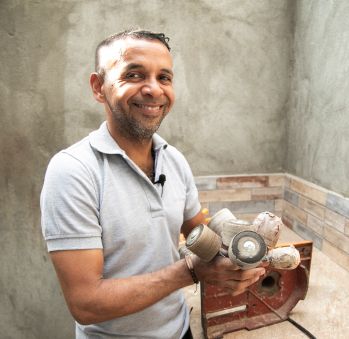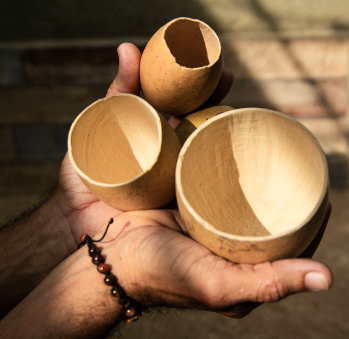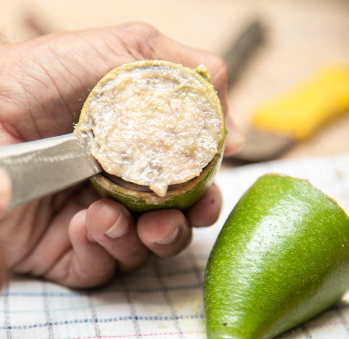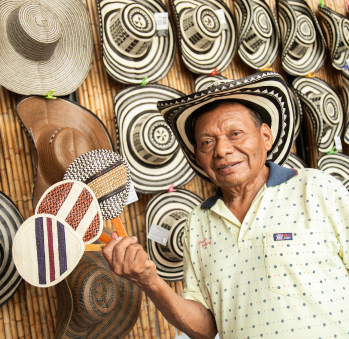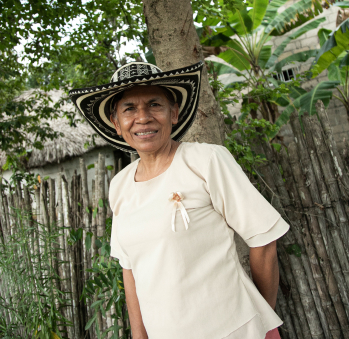Juan Urán
Workshop: Artesol El Cedro
Craft: Cestería
Trail: Cordoba Route
Location: Montería, Córdoba
Juan Urán, whose father and grandfather were both craftsmen, recognizes his role as the successor to his family’s tradition. Despite growing up apart from them due to his parents’ divorce, he is convinced that the craft’s genes run in his blood and that he could not have escaped his destiny. The Urans are jewelers from Ciénaga, and their story is woven with golden threads. He not only knows and appreciates this craft but has also expanded his interests, preferring to use various materials that enhance the objects he creates with his hands. This means that he works with other metals, such as silver, as well as with totumo, coconut, cow horns, and corozo seeds. For instance, this fruit resembles onyx when polished, and he uses it to create beautiful rings. To him, these materials are his precious stones, which give meaning to the place he calls home.
He fondly recalls his childhood when his grandfather instructed him to look after the rams in Ciénaga de Oro. Seeking shelter from the sun under the totumo trees, he observed the fruits hanging from the branches. One day, while resting in their shade, a helicopter flew by. He saw it through the lush tree branches, and that sight ignited his imagination. He went back home with a resolution: to make a flying toy from the totumo fruit. His experiment came out so well that later, when he admired a globe in his school classroom but lacked the funds to purchase one, he easily created his own from another totumo. At the time, he was unaware that the fruit required processing before use, or that the unripe one he had chosen would shrink as it dried. Nevertheless, these challenges didn’t hold him back from relishing its textured surfaces that, since then, turned into different geographies for him. He navigates life with an infectious spirit of joy and curiosity, effortlessly wearing a smile.
As he reflects on his years as a craftsman, he realizes that the totumo has always been present throughout his story. Just as filigree jewelry linked him to his grandfather, the totumo connected him to his grandmother. She used it to store atoyabuey sour cream and fresh butter, evoking savory memories. He observed her process of curing it by filling it with cooked milk and salt for a few days, then emptying it through a small hole she drilled in one of its tips. With this simple procedure, she immunized and prepared the shell for preserving various foods. However, when the family moved from Ciénaga de Oro to Montería, his childhood memories were replaced by new ones, in a new city.
In the capital, he acquired skills in pyrography and pursued Fine Arts courses. In the absence of a specialized program, he opted for graphic design studies. Yet, as fate would have it, he eventually returned to his roots, becoming a crafts instructor at Sena. There, he experimented with diverse materials including coconut, cow horns, wood, shells, and seeds, as well as other crafts like macramé, wood carving, and jewelry making. Eventually, the time came for him to establish his own workshop. The creative DNA of his family thrived as he designed his own pieces, a process he found deeply fulfilling. Even now, he continues to collect timber and totumos during his daily journey, fully aware that they will one day transform into crafts. His wife affectionately chuckles at his fixation.
His days are spent amidst totumos, which will shape into bowls or soup dishes, as well as shells and seeds that will become rings and accessories. He merely needs to listen to the nature that surrounds him; it will guide him in determining how to transform these materials.
Craft




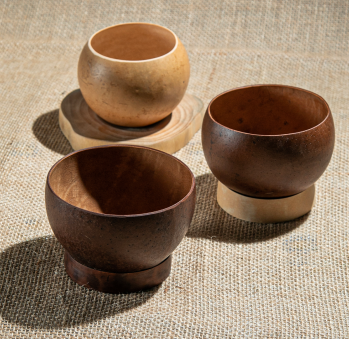


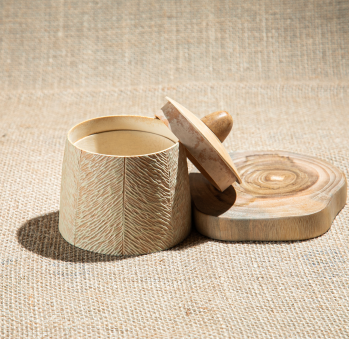










Artisans along the way
Artisans along the way
No puede copiar contenido de esta página









































